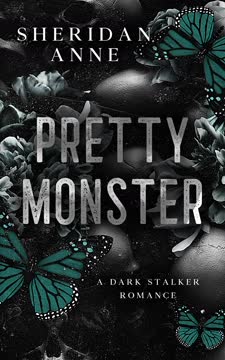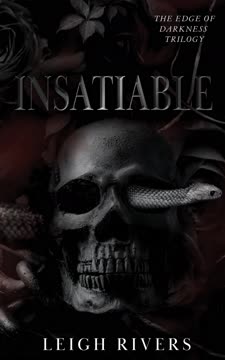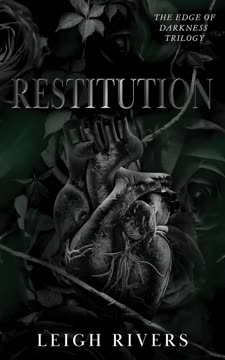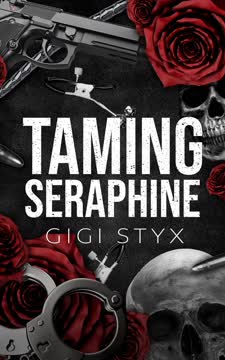Plot Summary
Kaleidoscope of Betrayal
Amethyst's life is a blur of trauma, her memories fractured and unreliable. After a childhood marked by violence and psychological abuse, she finds herself hunted by a doppelgänger—her twin sister, Dolly—who blames her for a stolen life. The story opens with Amethyst discovering her mother's corpse and being confronted by Dolly, who is both identical and utterly alien. This confrontation is the catalyst for a descent into a world of violence, captivity, and betrayal, where Amethyst's sense of self is constantly under siege. The narrative is immediately steeped in paranoia, confusion, and the threat of annihilation from within and without.
Doppelgänger's Revenge
Dolly, Amethyst's twin, is revealed as the architect of much of Amethyst's suffering. Having survived years of abuse and exploitation, Dolly returns with a vendetta, determined to make Amethyst pay for a childhood she believes was stolen from her. The sisters' relationship is a twisted mirror, each reflecting the other's pain and rage. Dolly's campaign of terror is both personal and symbolic, representing the generational cycle of violence and the impossibility of escaping one's past. The narrative explores the psychological warfare between the sisters, culminating in a deadly confrontation.
Catacombs and Catastrophe
Amethyst's only hope for survival is Xero, a former assassin and her pen pal, who leads a resistance against the criminal empire that once trained him. Their alliance is fraught with mistrust, especially after Amethyst, manipulated by false evidence, betrays Xero and sets him on fire. The catacombs beneath the city become both sanctuary and battleground, a labyrinth where loyalty is tested and the line between protector and predator blurs. The fire that nearly kills Xero is both literal and metaphorical, burning away illusions and forcing both characters to confront their darkest truths.
The Monster in the Mirror
Amethyst's grip on reality is tenuous, haunted by hallucinations of her abusers and the ever-present threat of her own madness. The narrative delves into her dissociative episodes, where the boundaries between self and other, victim and perpetrator, are dangerously thin. The monster in the mirror is both Dolly and Amethyst herself—a symbol of internalized trauma and the fear of becoming what one most despises. The struggle for identity is central, as Amethyst must decide whether to succumb to the roles imposed on her or forge a new path.
Captive and Captor
Captured by Dolly and her allies, Amethyst is forced into the world of X-Cite Media, a criminal enterprise producing snuff films for a depraved elite. Here, she is subjected to torture, humiliation, and the constant threat of death. The narrative is unflinching in its depiction of violence, but also in its portrayal of resistance—Amethyst's refusal to break, her small acts of defiance, and her determination to survive. The power dynamics between captor and captive are in constant flux, with Amethyst learning to weaponize her own suffering.
The Asylum's Ghosts
Flashbacks reveal the origins of Amethyst and Dolly's trauma: a childhood spent in the Three Fates Therapeutic Boarding School, a front for training child assassins. The sisters were separated, each subjected to different forms of abuse and manipulation. The asylum is both a literal and psychological prison, its ghosts haunting every aspect of their adult lives. The recovery of these memories is both painful and liberating, providing the key to understanding the present and breaking the cycle of violence.
Blood Ties and Broken Memories
The narrative expands to include the tangled web of family relationships: Amethyst's mother, Melonie, her stepfather Lyle (an FBI agent turned trafficker), and the Salentino crime family. Betrayal is everywhere—parents betray children, siblings betray each other, and institutions betray those they are meant to protect. The revelation that Amethyst and Dolly are the products of a long-standing vendetta shatters any remaining illusions of safety or innocence. The only way forward is through vengeance and the reclamation of agency.
The Devil's Children
Delta, Xero's father and the mastermind behind the Moirai and X-Cite Media, is revealed as the architect of a vast criminal network. He grooms children to become assassins and sex slaves, using psychological manipulation and violence to ensure their loyalty. The narrative exposes the machinery of exploitation, from the production of snuff films to the trafficking of organs. Amethyst and Xero's quest becomes not just personal, but a battle against a system that devours the vulnerable.
Auction of Suffering
In a climactic set piece, Amethyst is put up for auction, her body and life sold to the highest bidder. The scene is a grotesque parody of value and desire, where suffering is commodified and agency is stripped away. Xero, drugged and manipulated, is forced to fight Amethyst in front of an audience of predators. The performance is both a literal and symbolic confrontation with the forces that have shaped their lives. Survival depends on reclaiming the narrative and turning the tools of oppression against their wielders.
The Fire and the Ghost
The story's central motif—the fire—returns as Xero and Amethyst, surrounded by enemies, set the world ablaze. The inferno is both destructive and purifying, burning away the past and making space for something new. In the flames, they reaffirm their bond, not as victim and savior, but as equals forged in suffering. The fire is a crucible, transforming pain into power and trauma into love.
Vengeance in the Shadows
With Delta and his empire finally in their grasp, Amethyst and Xero embark on a campaign of vengeance. The narrative does not shy away from the brutality of their retribution—torture, mutilation, and execution are meted out to those who enabled Delta's crimes. Yet there is also a sense of justice, a reckoning for years of impunity. The destruction of the Moirai and the public exposure of X-Cite Media's clientele mark the end of an era of darkness.
The End of the Moirai
The Moirai, once the most powerful organization of assassins, is brought to its knees. Xero and Amethyst orchestrate its destruction, both physically—through explosions and sabotage—and symbolically, by freeing its victims and exposing its secrets. The end of the Moirai is not just a personal victory, but a blow against the machinery of exploitation. The survivors are left to rebuild, haunted by the past but no longer defined by it.
Ashes and New Beginnings
In the aftermath, Amethyst buries her mother and Dolly, choosing to let go of the past rather than be consumed by it. The narrative shifts from vengeance to healing, as the characters confront the possibility of forgiveness—not for their abusers, but for themselves. The ashes of the old world become the soil for something new, as Amethyst and Xero begin to imagine a future beyond survival.
Love After Ruin
Freed from the shadows of their pasts, Amethyst and Xero explore what it means to love after ruin. Their relationship, once defined by trauma and violence, becomes a source of healing and joy. The narrative is unflinching in its depiction of the scars they carry, but also in its celebration of resilience and the possibility of happiness. Together, they reclaim their bodies, their desires, and their futures.
The Final Confession
Amethyst's journey comes full circle as she publishes her story, reclaiming the narrative that others tried to write for her. The act of confession is both cathartic and empowering, allowing her to integrate the fragments of her identity and find peace. The power of story—both as weapon and as balm—is affirmed, as Amethyst's voice becomes a beacon for others lost in the dark.
The Monster's End
The final reckoning arrives as Delta, broken and humiliated, is executed by those he once controlled. The scene is both brutal and redemptive, a ritual cleansing that marks the end of an era. The survivors gather to witness his death, not as an act of vengeance, but as a necessary step toward healing. The monster is dead, but the scars he left remain—a reminder of the cost of survival and the necessity of solidarity.
A Future Forged in Fire
In the aftermath, Amethyst and Xero look to the future—not as victims, but as survivors and creators. Their love, forged in fire and tempered by suffering, becomes the foundation for a new life. The narrative ends on a note of hope, as they embark on a journey together, leaving behind the ruins of the past and embracing the possibility of joy.
Characters
Amethyst (Amy/Amaryllis Salentino)
Amethyst is the protagonist, a woman whose life is defined by trauma, betrayal, and the struggle for agency. Raised in a family rife with secrets and violence, she is separated from her twin, Dolly, and subjected to years of psychological and physical abuse. Her journey is one of survival, resistance, and ultimately, reclamation. Amethyst's psyche is marked by dissociation, hallucinations, and a deep fear of becoming the monster she sees in the mirror. Her relationship with Xero is both a lifeline and a crucible, forcing her to confront her past and forge a new identity. Over the course of the story, she transforms from victim to avenger, reclaiming her narrative and her power.
Xero Greaves
Xero is a former child assassin, the son of Delta, and Amethyst's pen pal turned lover. His life is a testament to the corrosive effects of violence and the possibility of redemption. Trained from childhood to kill, Xero is both ruthless and deeply wounded, haunted by the legacy of his father's cruelty. His relationship with Amethyst is the axis around which his world turns, offering both the hope of healing and the risk of further loss. Xero's journey is one of vengeance, but also of learning to love and be loved. He is both monster and savior, a man who must destroy the world that made him in order to build something new.
Dolly (Dahlia)
Dolly is Amethyst's identical twin, separated from her in childhood and subjected to even greater horrors. Her life is a litany of abuse, exploitation, and betrayal, culminating in her transformation into a monster. Dolly's vendetta against Amethyst is both personal and symbolic—a desperate attempt to reclaim agency and punish the world for her suffering. She is both victim and perpetrator, a tragic figure whose rage is as understandable as it is destructive. Dolly's death is both a liberation and a loss, a reminder of the thin line between survival and monstrosity.
Delta (Dalton Grey)
Delta is the story's primary antagonist, the founder of the Moirai and X-Cite Media, and the father of Xero. He is a master manipulator, grooming children to become assassins and sex slaves, and orchestrating a vast criminal empire. Delta's cruelty is both systemic and personal, targeting his own children and countless others. He is the embodiment of patriarchal violence, a monster whose power is built on the suffering of the vulnerable. His eventual downfall is both a personal and political victory, marking the end of an era of impunity.
Camila
Camila is Xero's sister, a survivor of abuse who becomes a medic and a key member of the resistance. She represents the possibility of healing and solidarity, offering both practical support and emotional grounding. Camila's relationship with Xero is complex, marked by both love and the scars of their shared past. Her abduction and rescue are pivotal moments, underscoring the stakes of the struggle and the necessity of collective action.
Isabel
Isabel is Xero's other sister, a medic whose compassion is matched by her ruthlessness. She is both caretaker and avenger, tending to the wounded while meting out justice to the guilty. Isabel's presence is a reminder that healing and violence are not mutually exclusive, and that survival often requires both.
Charlotte (Kappa)
Charlotte is the girls' childhood nanny and an instructor at Three Fates, complicit in their abuse and the trafficking of children. Her role is both that of abuser and victim, a woman who perpetuates harm while rationalizing her own suffering. Charlotte's eventual capture and torture by Amethyst is both a reckoning and a commentary on the cycle of violence.
Locke
Locke is a doctor and one of Delta's lieutenants, responsible for drugging and controlling Dolly and Amethyst. He is a master of psychological and physical manipulation, using his position to exploit the vulnerable. Locke's betrayal of Dolly and his eventual death at Amethyst's hands are emblematic of the story's theme of retribution.
Jynxson
Jynxson is Xero's oldest friend and a key member of the resistance. His relationship with Xero is marked by both loyalty and challenge, serving as a sounding board and a check on Xero's more destructive impulses. Jynxson's survival and continued presence are testaments to the power of solidarity.
Myra
Myra is Amethyst's best friend, a literary agent who provides a link to the world outside the cycle of violence. Her support is both practical and emotional, offering Amethyst a sense of belonging and the possibility of a future beyond survival.
Plot Devices
Dual Narratives and Unreliable Memory
The novel employs alternating points of view (primarily Amethyst and Xero), each colored by trauma, hallucination, and unreliable memory. This structure mirrors the characters' fractured psyches and the difficulty of discerning reality from manipulation. Flashbacks, hallucinations, and recovered memories are used to gradually reveal the truth, creating suspense and deepening the psychological complexity. The unreliable narration is both a plot device and a thematic exploration of the effects of trauma.
Doppelgänger and Mirror Imagery
The motif of the doppelgänger—embodied in the relationship between Amethyst and Dolly—serves as a metaphor for internalized trauma and the fear of becoming one's abuser. Mirrors, reflections, and mistaken identity are recurring devices, used to explore the fluidity of self and the dangers of projection. The twin dynamic is both literal and symbolic, driving the plot and the characters' psychological journeys.
The Cycle of Violence and Revenge
The narrative is structured around cycles of violence—abuse begets abuse, betrayal begets betrayal, and vengeance begets more suffering. The characters' quests for revenge are both justified and self-destructive, forcing them to confront the limits of retribution and the possibility of breaking the cycle. The destruction of the Moirai and the execution of Delta are both climaxes and turning points, marking the end of one era and the beginning of another.
Trauma, Dissociation, and Recovery
The novel is unflinching in its depiction of trauma, dissociation, and the long road to recovery. Amethyst's hallucinations, flashbacks, and dissociative episodes are not just plot devices, but central to the narrative's exploration of survival and healing. The act of storytelling—both within the narrative and in Amethyst's eventual authorship—is presented as a means of integrating trauma and reclaiming agency.
Foreshadowing and Symbolic Motifs
Fire is a recurring symbol, representing both destruction and purification. The motif of the ghost—Amethyst's nickname and her hallucinated protector—serves as a metaphor for the persistence of trauma and the possibility of transcendence. Blood, both as a marker of violence and as a symbol of kinship, runs through the narrative, tying together themes of family, betrayal, and redemption.
Analysis
I Will Mend You is a harrowing, unflinching exploration of the darkest corners of human experience—abuse, exploitation, and the corrosive effects of generational violence. Yet it is also a story of survival, resistance, and the possibility of healing. Through its dual protagonists, Amethyst and Xero, the novel interrogates the ways in which trauma shapes identity, the dangers of internalizing the roles imposed by abusers, and the necessity of reclaiming one's narrative. The book is both a thriller and a psychological study, using the conventions of dark romance and crime fiction to probe deeper questions about agency, justice, and the power of love to transform even the most broken souls. Its lessons are hard-won: that survival is not the same as healing, that vengeance is both necessary and insufficient, and that the only way out of the labyrinth is through solidarity, self-knowledge, and the courage to imagine a future beyond the ruins of the past.
Last updated:
FAQ
Synopsis & Basic Details
What is I Will Mend You about?
- A fractured identity's quest: I Will Mend You plunges into Amethyst's fragmented reality after she discovers her mother's corpse and confronts a doppelgänger claiming to be her twin sister, Dolly. This shocking encounter propels Amethyst into a dark world of abduction, psychological torment, and forced participation in a criminal snuff film enterprise known as X-Cite Media.
- Survival against a dark past: As Amethyst grapples with her unreliable memories and dissociative episodes, she must navigate a labyrinth of betrayal orchestrated by her twin and Xero's father, Delta. Her only perceived ally is Xero, her former pen pal and a reformed assassin, whom she mistakenly believes she killed.
- Unveiling a hidden war: The narrative unfolds as Amethyst fights for survival, slowly uncovering the horrifying truth of her childhood at the "Three Fates Therapeutic Boarding School," a front for training child assassins and a nexus of a vast criminal network. The story becomes a brutal journey of self-discovery, vengeance, and the desperate fight to reclaim her identity and freedom.
Why should I read I Will Mend You?
- Unflinching psychological depth: Readers seeking a dark romance that delves deep into the human psyche will find Amethyst's struggle with trauma, dissociation, and unreliable memory compelling. The narrative's exploration of her internal world, where hallucinations blur with reality, offers a unique and intense reading experience.
- Complex moral landscape: The novel challenges conventional notions of good and evil, presenting characters like Xero and Amethyst who are both victims and perpetrators, driven by a thirst for justice that often blurs into brutal vengeance. It's a story for those who appreciate morally gray characters and the exploration of how extreme circumstances shape identity.
- Propulsive, high-stakes thriller: Beyond its psychological layers, I Will Mend You delivers relentless suspense and action. From daring escapes and brutal interrogations to explosive confrontations, the plot is a high-octane ride that keeps readers on the edge of their seats, eager to uncover the next twist.
What is the background of I Will Mend You?
- A world of clandestine operations: The story is set against a backdrop of a hidden underworld where former FBI agents establish powerful, morally corrupt organizations like the Moirai Group, a firm of assassins, and X-Cite Media, a snuff film empire. This clandestine network operates with impunity, often exploiting vulnerable children and manipulating law enforcement.
- Trauma-informed narrative: The novel deeply explores the long-term psychological impact of childhood abuse and manipulation, particularly through the lens of dissociative identity disorder and repressed memories. The "Three Fates Therapeutic Boarding School" serves as a chilling representation of institutionalized trauma and child trafficking.
- Subversion of genre tropes: While rooted in dark romance, the book subverts typical genre conventions by presenting a heroine who is not merely a damsel in distress but a "scarred warrior" (Chapter 66) capable of extreme violence and strategic thinking. It blends elements of psychological thriller, crime fiction, and gothic horror, creating a unique and unsettling atmosphere.
What are the most memorable quotes in I Will Mend You?
- "For everyone who ever needed a villain to burn down the world for you.": This dedication sets the tone for the entire novel, immediately signaling its dark themes and the morally ambiguous nature of its protagonists. It encapsulates the core idea of righteous vengeance and the willingness to embrace darkness for a perceived greater good.
- "You're the strongest person I know. And now, we have a second chance. We can heal together.": Spoken by Xero to Amethyst in Chapter 48, this quote is a pivotal moment of acceptance and hope. It highlights Xero's unwavering belief in Amethyst's resilience and the central theme of healing through shared trauma and mutual support, even after immense suffering.
- "I will never see you as tainted or dirty... But I will replace his touch with mine, only when you're ready.": Xero's declaration in Chapter 66, during Amethyst's bath, is a powerful statement of unconditional love and respect. It directly addresses Amethyst's deep-seated feelings of contamination and offers a path to reclaiming her body and sexuality on her own terms, emphasizing consent and emotional healing.
- "I love you more than the blood in my veins. I love you more than the air in my lungs. You're the first thing I think about when I wake, and the last on my mind when I sleep. I love you so much that every moment without you feels like burning in the pits of hell.": Xero's raw confession of love in Chapter 79 encapsulates the intense, all-consuming nature of his devotion to Amethyst. It underscores the depth of their bond, forged through shared trauma and a mutual understanding of darkness, making their connection feel fated and absolute.
What writing style, narrative choices, and literary techniques does Gigi Styx use?
- Visceral, sensory-driven prose: Styx employs a highly immersive and visceral writing style, often using intense sensory details to convey Amethyst's fragmented reality and the brutality of her experiences. Descriptions like "Juniper-scented air fills my nostrils but does nothing to clear the scent of death" (Chapter 1) or "The air is thick with the scent of damp, and a musty odor clings to my nostrils" (Chapter 5) pull the reader directly into Amethyst's disoriented and terrifying world.
- Alternating perspectives and unreliable narration: The narrative frequently shifts between Amethyst's and Xero's points of view, often within the same chapter, creating a dynamic and sometimes disorienting reading experience. Amethyst's perspective is particularly unreliable due to her hallucinations and repressed memories, forcing the reader to question what is real, as seen when she initially believes Xero is a ghost or Delta is Xero in disguise.
- Symbolic use of color and environment: Beyond the explicit symbolism of fire and mirrors, Styx subtly uses color and environmental descriptions to reflect psychological states. The "monochromatic haze" of white in the asylum (Chapter 15) symbolizes Amethyst's drugged and dissociated state, while the "lush greenery" and "golden afternoon light" of the safe house garden (Chapter 52) represent her path to healing and newfound peace.
Hidden Details & Subtle Connections
What are some minor details that add significant meaning?
- The "rusty kettle on stilts" water tower: This seemingly innocuous detail mentioned in Chapter 62, seen by Amethyst and Dolly on their way to Three Fates, serves as a specific, tangible landmark that later helps Xero's team pinpoint the facility's location. It's a subtle callback that transforms a childhood memory into a crucial piece of intelligence for the rescue mission.
- Charlotte's "Mary Poppins-style" description: Melonie Crowley's diary in Chapter 17 initially describes Charlotte as a "British supernanny" with a "firm hand and a warm heart." This seemingly innocent detail is a chilling misdirection, contrasting sharply with Charlotte's true nature as a manipulative abuser and child trafficker, highlighting Melonie's self-deception and the insidious nature of the threat.
- The "Three Fates" name: The name of the boarding school, "Three Fates Therapeutic Boarding School," is a direct mythological allusion (Chapter 17). While the existing summary mentions the Moirai, the specific connection to the Fates (Clotho, Lachesis, and Atropos, who spin, measure, and cut the thread of life) subtly foreshadows the school's true purpose: controlling and ending the lives of the children within its walls, particularly the "Lolita assassins."
What are some subtle foreshadowing and callbacks?
- Amethyst's mirror aversion: From the very first chapter, Amethyst states, "Nausea clogs my throat, and my stomach twists the way it usually does when I look in the mirror too long." This early detail subtly foreshadows the existence of her identical twin, Dolly, and the deep-seated psychological trauma linked to her own reflection, which she perceives as a "monster."
- Xero's "avenging spirit" promise: In Chapter 59, Xero tells Amethyst, "If I'm dead, then I'll still watch over you like an avenging spirit." This is a direct callback to Amethyst's initial perception of him as a ghost haunting her, but it recontextualizes his "haunting" as a protective, rather than tormenting, presence, reinforcing his unwavering loyalty.
- The "four holes" threat: Locke's chilling threat to Amethyst in Chapter 5, "Then you'll wake up hours later with all four holes aching and filled with half a dozen different varieties of cum," is a brutal foreshadowing of the sexual violence she endures. It's later echoed in Chapter 90 when Amethyst, in a moment of vengeful power, tells Locke, "I'm about to give you five," before castrating him, turning his own words against him.
What are some unexpected character connections?
- Dr. Forster's complicity and fate: Dr. Forster, Melonie's therapist, is initially presented as a professional, but the diary entries reveal his unethical conduct and complicity in Melonie's gaslighting and the twins' trauma. His eventual death by "ice bath he used for my mind conditioning" (Chapter 96) is a direct, ironic retribution for the inhumane treatments he prescribed for Amethyst, linking his professional malpractice to his brutal end.
- Lyle Bishop's true identity and betrayal: Amethyst's stepfather, Lyle, is revealed not just as a former FBI agent but as a key figure in Delta's child trafficking ring (Chapter 47). His seemingly supportive role in Melonie's life was a calculated manipulation to gain access to the twins, making his "devotion" a chilling facade and connecting him directly to the broader criminal enterprise.
- The Montesano family's deeper ties: The Montesano family, initially introduced through Roman (Xero's cellmate) and Cesare (Myra's boss), is revealed to be a powerful crime family with direct ties to the Salentinos (Amethyst's biological family) and later, Xero's Moirai operation (Chapter 96). This intricate web of familial and criminal connections underscores the pervasive nature of the underworld and the deep roots of the characters' trauma.
Who are the most significant supporting characters?
- Melonie Crowley (Amethyst's Mother): Beyond being a victim, Melonie's diary entries (Chapters 17, 19, 21, 23, 25, 27, 29, 31, 33, 35, 37, 39, 41, 43, 45, 47, 49, 51) are crucial. They provide the missing pieces of Amethyst's past, revealing the complex web of family secrets, betrayals, and the true origins of the twins' trauma, including Lyle's machinations and Charlotte's poisoning attempts. Her narrative is essential for Amethyst's psychological recovery and understanding of her own history.
- Grunt (Fenrick Greer): Initially appearing as a brutish henchman, Grunt's character subtly evolves. His brief moments of "pity or even regret" (Chapter 18) and his eventual defection, saving Amethyst from the asylum, make him a significant, albeit temporary, ally. His backstory as a former X-Cite Media extra whose identity was leaked by Delta (Chapter 22) highlights the pervasive exploitation within the organization, even among its lower ranks.
- Rebecca "Becky" Taylor: Dad's assistant, Becky, is initially a minor detail (Chapter 65). However, her connection to Charlotte Banks and the "Sacred Hearts Adoption Agency" reveals her complicity in child trafficking. Her character serves as a bridge between Lyle's past as an FBI agent and his later role in Delta's network, exposing the insidious nature of the operation.
Psychological, Emotional, & Relational Analysis
What are some unspoken motivations of the characters?
- Melonie's self-preservation and denial: Beyond simply being a "neurotic mother," Melonie's diary reveals her deep-seated fear of her Salentino past and her desperate attempts to maintain a semblance of normalcy. Her denial of Dolly's psychopathy and her willingness to send Amethyst away were driven by a desperate need to protect her new family and her own sanity, even at the cost of her daughters' well-being. She "didn't want to tell him too much and endanger Dolly" (Chapter 33).
- Xero's need for control and redemption: While Xero's primary motivation is vengeance against Delta, his actions are also deeply rooted in a need to control his environment and atone for his past. His meticulous planning, his desire to "cleanse" Amethyst of Delta's touch, and his insistence on being her "anchor" (Chapter 56) stem from his own traumatic upbringing and a desire to prevent others from suffering as he did.
- Dolly's twisted desire for validation: Dolly's extreme cruelty towards Amethyst, beyond simple revenge, is fueled by a desperate need for validation and recognition, particularly from Delta. Her willingness to embrace her role as a "star" in snuff films and her belief that she is "the only one capable of giving Xero his heart's desire" (Chapter 87) reveal a deep-seated insecurity and a warped sense of self-worth derived from her abusers.
What psychological complexities do the characters exhibit?
- Amethyst's adaptive dissociation and fragmented self: Amethyst's dissociation is not merely a symptom of trauma but an adaptive coping mechanism. Her "hallucinated Xero" (Chapter 56) serves as a protective alter, buffering her from unbearable reality and guiding her through impossible situations. This complex psychological defense allows her to survive horrors that would otherwise shatter her, but also contributes to her fragmented memory and difficulty discerning reality.
- Xero's controlled rage and protective instincts: Xero exhibits a profound psychological complexity in his ability to compartmentalize his immense rage. While he is capable of extreme violence, he consistently restrains himself for Amethyst's sake, channeling his fury into strategic planning and calculated retribution. His internal conflict between his "monstrous acts" and his "heart" (Chapter 75) highlights his struggle to reconcile his assassin identity with his capacity for deep love and protection.
- Charlotte's rationalized cruelty: Charlotte embodies the psychological complexity of an abuser who rationalizes her actions as survival. Her claim of being "a victim, just like you" (Chapter 69) and her belief that she was "under orders" reveal a twisted self-perception. Her ability to switch between a "frightened facade" and a "cold, calculating gaze of an assassin" (Chapter 69) demonstrates a deeply ingrained psychological conditioning that allows her to inflict harm without apparent remorse.
What are the major emotional turning points?
- Amethyst's realization of Dolly's true nature: The moment Amethyst watches the video of Dolly murdering her mother and uncle, realizing it wasn't a hallucination or her own doing, is a major emotional turning point (Chapter 9). This shatters her self-blame and redirects her anger, shifting her from a state of confused victimhood to one of righteous fury and a clear target for vengeance.
- Xero's discovery of Amethyst's abuse at the asylum: When Xero learns the full extent of Amethyst's torture and sexual violation at the asylum, particularly the details of Delta's actions, it ignites a profound shift in his emotional landscape (Chapter 42). His initial anger at her "betrayal" transforms into an all-consuming protective rage, solidifying his commitment to her healing and his brutal retribution against Father.
- Amethyst's first consensual sexual encounter with Xero: The bath scene and subsequent intimacy (Chapters 65-66, 72-74) mark a crucial emotional turning point for Amethyst. Her ability to engage in consensual intimacy, despite her recent trauma, signifies a powerful step in reclaiming her body and sexuality. Xero's patience and reverence during this process allow her to begin "erasing Delta's touch" (Chapter 65) and replacing it with a healing, loving connection.
How do relationship dynamics evolve?
- Amethyst and Xero: From stalker/victim to partners in vengeance and love: Their relationship undergoes a radical transformation. Initially, Amethyst perceives Xero as a tormenting ghost, a "grim reaper chasing me through the graveyard" (Chapter 94). Through shared trauma, Xero's unwavering support, and Amethyst's growing agency, they evolve into "kindred spirits" (Chapter 67), partners in both brutal retribution and profound intimacy, culminating in a deep, consensual love where they are "perfect match[es]" (Chapter 74).
- Amethyst and Dolly: From mirror images to distinct enemies: The twin dynamic, initially one of confused identity and perceived rivalry, hardens into a clear-cut adversarial relationship. Amethyst's realization that Dolly is not a hallucination but a distinct, malevolent entity (Chapter 9) and her understanding of Dolly's deep-seated resentment (Chapter 57) leads to a final, brutal confrontation where Amethyst kills Dolly, severing the toxic "blood tie" (Chapter 89).
- Melonie and Lyle: A facade of family unravels: The diary entries reveal the insidious decay of Melonie and Lyle's marriage. What appeared to be a protective, loving relationship is exposed as a calculated manipulation by Lyle, who uses Melonie's paranoia and the twins' issues to further Delta's trafficking agenda. Their dynamic shifts from a seemingly supportive partnership to one of profound betrayal, culminating in Lyle's death and Melonie's destitution.
Interpretation & Debate
Which parts of the story remain ambiguous or open-ended?
- The full extent of Amethyst's "lost" memories: While Amethyst recovers significant portions of her past, particularly her time at Three Fates and the circumstances of Lyle's death, the narrative occasionally hints at deeper, still-unrecovered traumas. For instance, her vague memory of the Reed brothers' incident (Chapter 77) suggests there might be more to her past kills than fully revealed, leaving some aspects of her "track record" (Chapter 28) open to interpretation.
- The fate of all trafficked children: While Xero and Amethyst rescue the children from Three Fates and the organ trafficking ring, the sheer scale of Delta's operations, hinted at through Charlotte's confessions (Chapter 70), suggests that many more victims remain. The story concludes with a focus on the rescued children's recovery, but the broader network of exploitation and the fate of all its victims remain an open question.
- The long-term psychological impact on the rescued children: The novel acknowledges that the rescued children will need therapy for their PTSD (Chapter 75), but the full extent of their recovery and integration into "normal" society is left to the reader's imagination. Given the severity of their conditioning as assassins, their future remains a poignant ambiguity.
What are some debatable, controversial scenes or moments in I Will Mend You?
Review Summary
I Will Mend You received overwhelmingly positive reviews, with readers praising its dark themes, intense plot, and character development. Many found the book emotionally gripping, with a compelling romance between Xero and Amethyst. Readers appreciated the author's handling of trauma and revenge. Some criticized the miscommunication trope and length. The book's graphic content and trigger warnings were frequently mentioned. Overall, fans of dark romance found it a satisfying conclusion to the duet, while a minority felt it was too intense or convoluted.
Pen Pals Duet Series
Similar Books
Download PDF
Download EPUB
.epub digital book format is ideal for reading ebooks on phones, tablets, and e-readers.



















